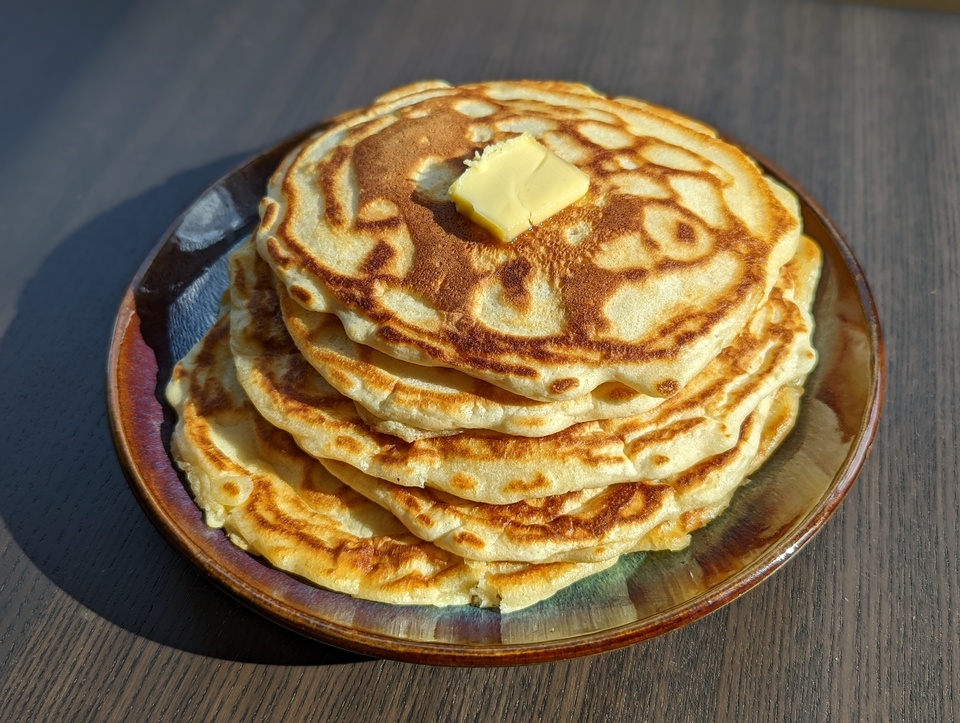Old fashioned pancakes
Ingredients
- 2 cups all purpose flour
- 2 teaspoons baking powder
- ¼ teaspoon salt
- 1 tablespoon granulated sugar
- 1 large egg
- 3 tablespoons butter, melted then allowed to cool slightly
- 2 teaspoons vanilla extract
- 1 ½ cups milk
Instructions
- In a large bowl, mix together all dry ingredients. Then, add the wet ingredients and mix everything together. Be careful not to overmix, though…just stir until everything is mixed together. Then, and this is important, let it sit for 10 to 15 minutes. I know…it’s difficult. But this is important for two reasons (and yes, I’m getting all scientific about pancakes):
- By letting the batter rest for a few minutes, this allows all of the batter to become hydrated by the wet ingredients. No one wants clumps of dry flour in their pancakes.
- Gluten is what makes our doughs and batters hold together. The more you stir (or knead) a batter or dough, the more gluten develops. If you let the gluten develop a lot, you’ve got an elastic, chewy bread. Not at all what we want in a pancake. By letting the batter rest, the gluten also rests and takes a few minutes to calm down from being mixed, and our pancakes come out light and fluffy. This is also why we barely mix the batter, so as to not “overwork” the gluten (if you’re a science nerd like me, this article by King Arthur Baking will tell you everything you ever wanted to know about gluten).
- In a large bowl, mix together all dry ingredients.
- Then, add the wet ingredients and mix everything together. Be careful not to overmix, though.
- Let the batter rest for 10-15 minutes.
- Heat a non-stick pan or skillet over low-medium heat. Let it heat up for a minute or two.
- Pour about ¼ c of batter into the pan.
- Let your pancake cook for a minute or two, until the underside is golden brown and a few small bubbles appear on top.
- Gently but quickly flip over your pancake and cook for another minute or so until that side is also golden brown.
Notes
- Let the batter rest: By letting the batter rest for a few minutes, this allows all of the batter to become hydrated by the wet ingredients. No one wants clumps of dry flour in their pancakes.
- Don’t overmix the batter: Gluten is what makes our doughs and batters hold together. The more you stir (or knead) a batter or dough, the more gluten develops. If you let the gluten develop a lot, you’ve got an elastic, chewy bread. Not at all what we want in a pancake. By letting the batter rest, the gluten also rests and takes a few minutes to calm down from being mixed, and our pancakes come out light and fluffy. This is also why we barely mix the batter, so as to not “overwork” the gluten.
- Patience is a virtue: Don’t rush the process. Yes, pancakes cook quickly, but don’t rush it. Keep the temperature of the pan at low-medium. Turning it up too high will just result in pancakes with a burned outside and a raw inside.
Credit: Maplewood Road
